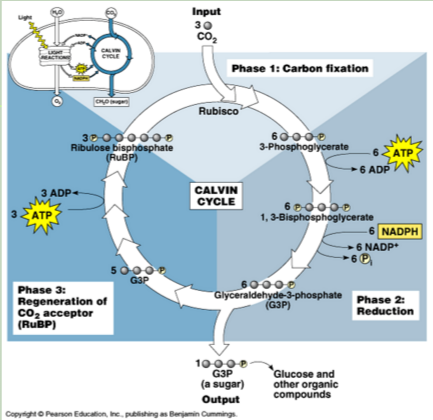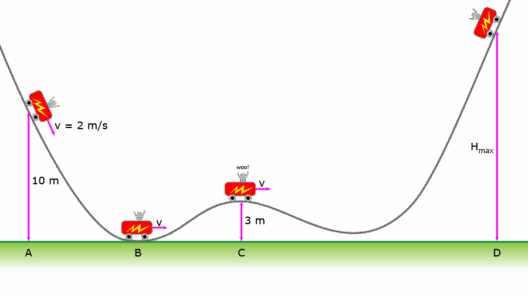Photosynthesis, often deemed nature’s quintessential powerhouse, embodies an intricate mechanism through which solar energy is converted into chemical energy. This process not only sustains plant life but also supports nearly all life forms on Earth. Through the lens of energy conservation, photosynthesis presents a fascinating paradigm that exemplifies the elegant efficiency inherent in ecological systems. To grasp the remarkable phenomenon of photosynthesis, one must delve into the myriad ways in which energy is conserved and transformed, creating a dynamic interplay of natural forces.
The process of photosynthesis predominantly occurs in the chloroplasts, specialized organelles nestled within the cells of green plants. Central to this process are two vital stages: the light-dependent reactions and the light-independent reactions, commonly known as the Calvin cycle. Each stage serves a unique function while working in concert to ensure maximized energy conservation.
During the light-dependent reactions, which take place within the thylakoid membranes, chlorophyll—a pigment that absorbs sunlight—captures photons. This intermingling of light and chlorophyll initiates a cascade of electron transport, effectively converting solar energy into adenosine triphosphate (ATP) and nicotinamide adenine dinucleotide phosphate (NADPH). These energy carriers play pivotal roles in the subsequent stages of photosynthesis.
The energy harnessed during these stages is nothing short of remarkable. It is during these light-dependent reactions that the first significant conservation of energy is observed. The conversion of light energy into chemical energy in the form of ATP and NADPH illustrates a quintessential principle of conservation: energy can neither be created nor destroyed, but only transformed from one form to another. The efficiency with which chlorophyll captures and channels sunlight underscores an evolutionary marvel, optimized through millions of years of natural selection.
Transitioning into the Calvin cycle, the stored energy in ATP and NADPH is utilized to drive the synthesis of glucose from carbon dioxide and water. Herein lies another critical aspect of energy conservation. Through a series of intricate enzymatic reactions, carbon fixation occurs, contributing to a sustainable energy economy. The glucose produced not only serves as an energy source for growth and metabolism within the plant but also acts as foundational energy for other organisms through the food chain.
Moreover, the conservation of energy during photosynthesis transcends mere biochemical processes. It encapsulates a broader ecological narrative, promoting biodiversity and fostering resilience within ecosystems. Terrestrial plants, through the act of photosynthesis, sequester carbon dioxide, effectively mitigating greenhouse gas concentrations in the atmosphere. Thus, they perform a dual role—not only do they generate energy, but they also contribute significantly to climate regulation.
A closer examination of the reaction mechanism reveals the importance of enzymatic activity in the conservation of energy. The enzyme ribulose-1,5-bisphosphate carboxylase/oxygenase (RuBisCO), integral to the Calvin cycle, catalyzes the fixation of carbon dioxide. This reaction showcases an intriguing aspect of energy conservation—the balance between efficiency and saturation. In scenarios where carbon dioxide concentrations are heightened, RuBisCO operates with superior efficiency, optimizing the energy conversion process. This adaptability exemplifies nature’s capacity to conserve energy in varying environmental contexts.
Furthermore, the conservation of energy during photosynthesis is not isolated to terrestrial flora. Aquatic plants and algae also engage in photosynthesis, albeit with different adaptative strategies due to variations in light penetration and water availability. In aquatic ecosystems, for instance, phytoplankton assume a pivotal role as primary producers, engaging in photosynthesis and, consequently, transforming solar energy into bioavailable forms of carbon. This process fuels the entire marine food web, exemplifying a crucial interplay between photosynthesis, energy conservation, and ecological interdependence.
As we continue to grapple with the implications of climate change, exploring the energy conservation mechanisms inherent in photosynthesis offers profound insights. The findings from studies on photosynthetic efficiency may inspire innovations in agricultural practices, propelling a shift towards more sustainable food production methods. By optimizing photosynthetic efficiency through selective breeding or genetic engineering, we could enhance crop yields while simultaneously reducing resource inputs, marking a significant stride towards ecological balance.
In sum, the intricate dance of energy conversion and conservation during photosynthesis exemplifies nature’s ingenious design. Through the dual pathways of light-dependent and light-independent reactions, sunlight is transformed into tangible energy forms, fostering life on Earth. This process highlights not only the efficiency of energy transformation but also the broader ecological ramifications, illustrating how energy conservation in photosynthesis underpins the very fabric of ecosystem dynamics. By embracing a deeper understanding of these mechanisms, we can cultivate a renewed appreciation for our planet’s systems and promote practices that align with ecological sustainability.
As curiosity is piqued, it beckons further exploration into the symbiosis of photosynthesis within varying ecosystems. The potent lessons learned from nature’s own systems offer a vital keystone in the quest for sustainable living. Delving deeper into the nuances of photosynthesis may illuminate pathways for an environmentally conscious future, reinforcing our commitment to conservation and ecological integrity.








